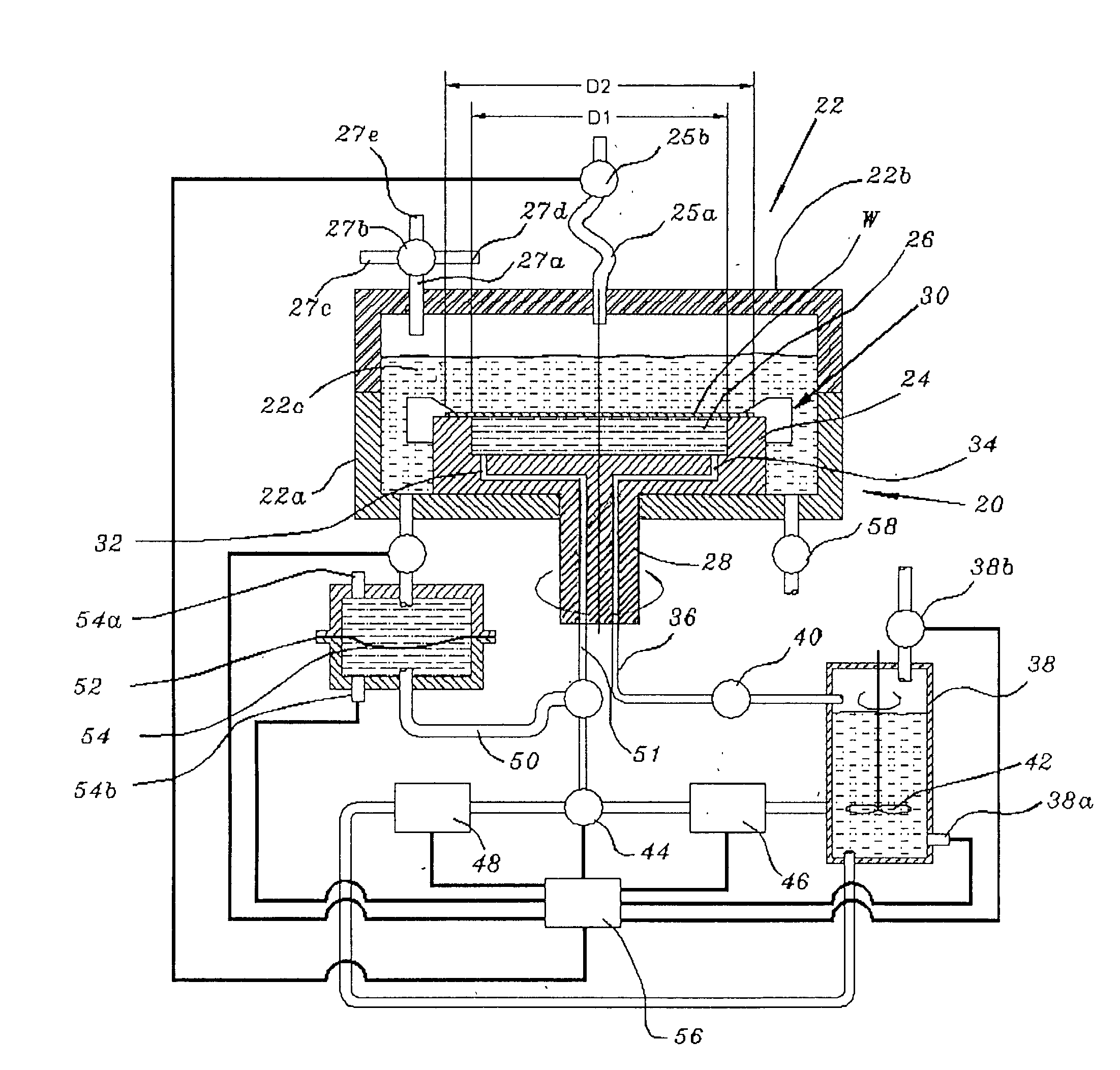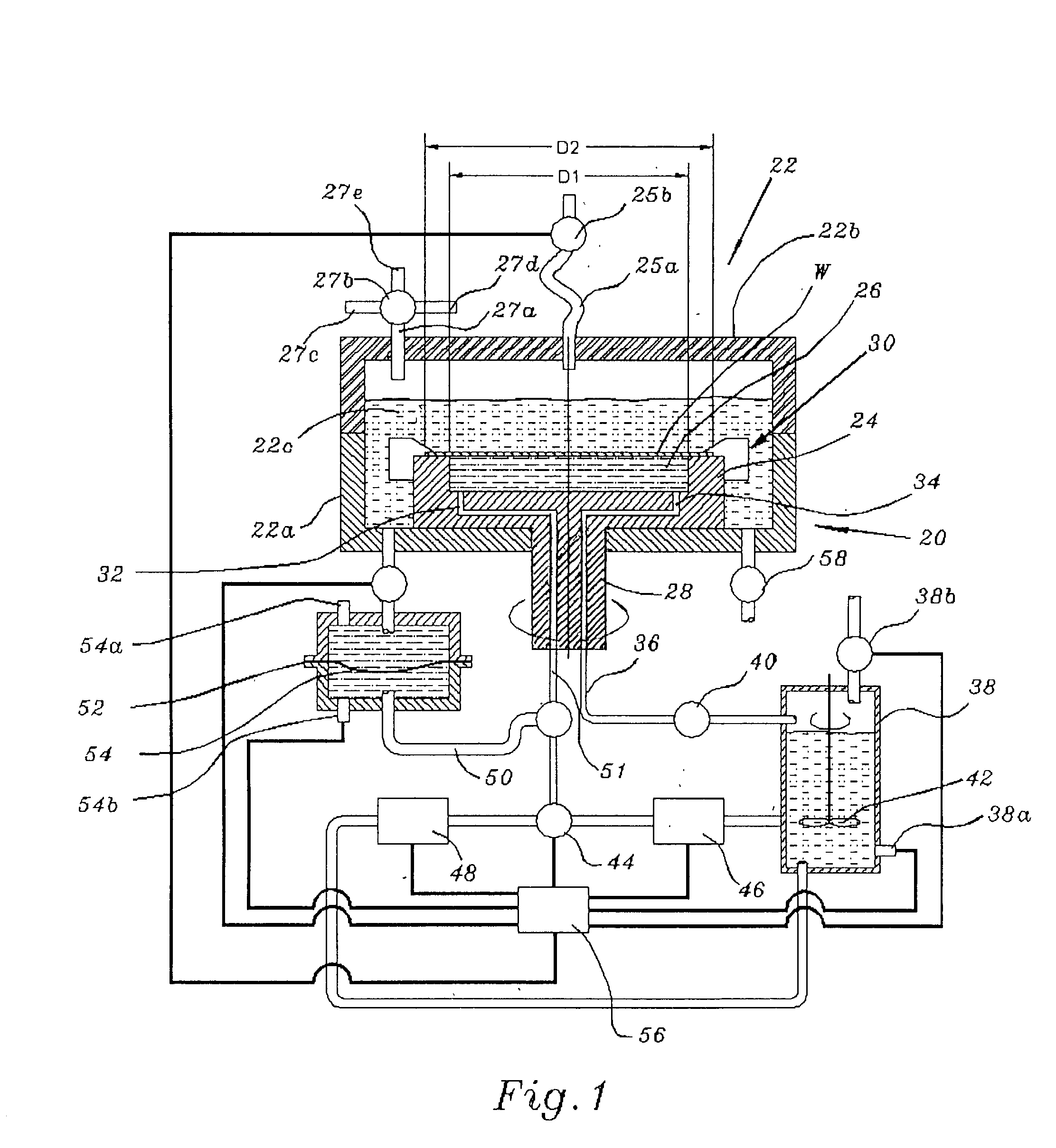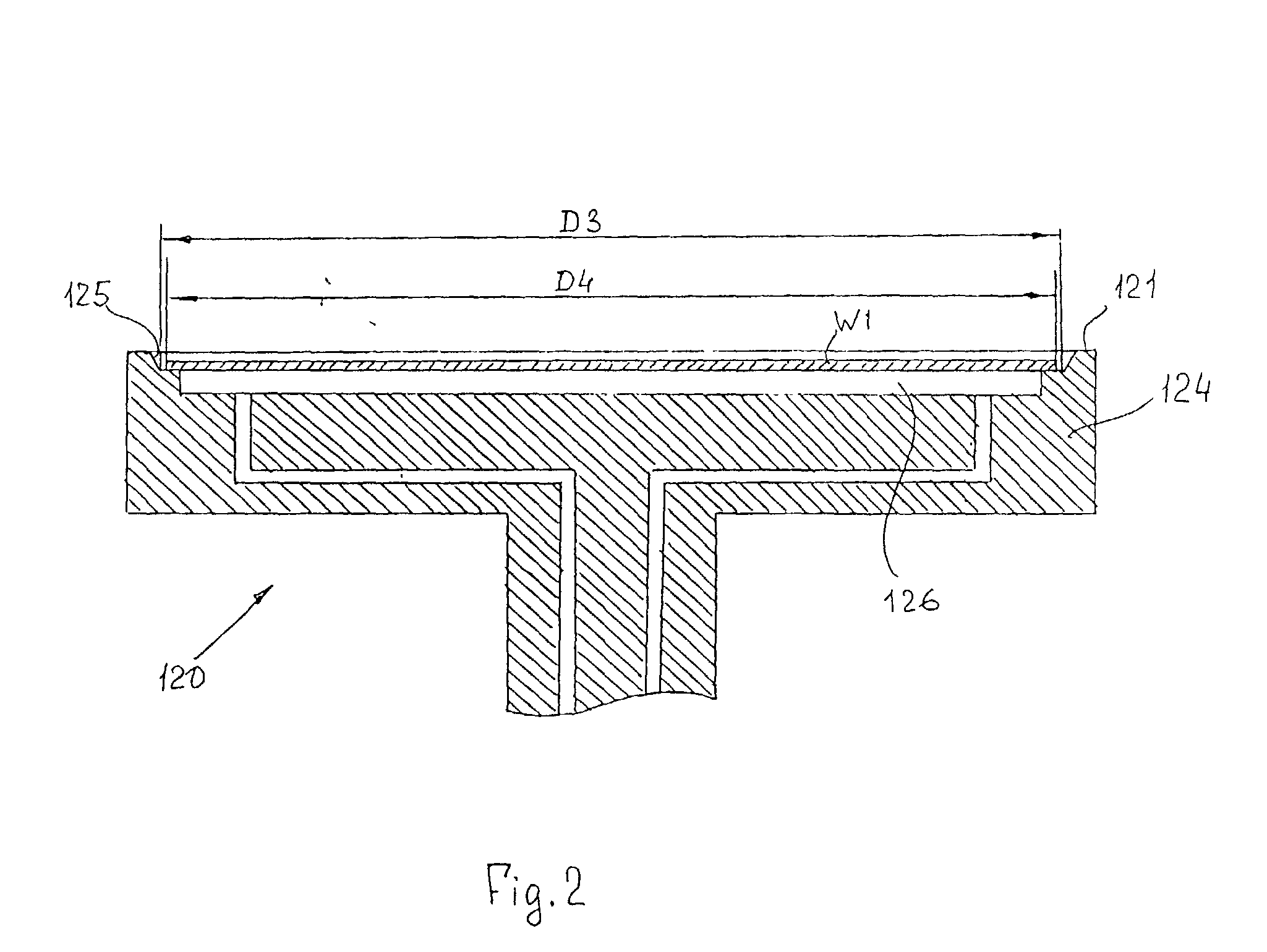Temperature-controlled substrate holder for processing in fluids
a technology of temperature control and substrate, applied in the direction of liquid/solution decomposition chemical coating, manufacturing tools, light and heating apparatus, etc., can solve the problems of increasing maintenance requirements, non-uniform deposition of plated metallic materials, and increasing the complexity of electroplating equipment, so as to achieve rapid replacement of cooling/heating medium.
- Summary
- Abstract
- Description
- Claims
- Application Information
AI Technical Summary
Benefits of technology
Problems solved by technology
Method used
Image
Examples
Embodiment Construction
[0057] FIG. 1 is a schematic vertical cross-sectional view of a substrate holder 20 made in accordance with one embodiment of the invention. The substrate holder 20 is located in a sealable working chamber 22 of an electroless deposition apparatus (not shown), e.g., of the type described in pending U.S. patent application . . . submitted by the same applicants on . . . . The working chamber 22 consists of a stationary lower cup-shaped part 22a having an open part facing upward and a moveable upper cup-shaped part 22b having its open facing down towards the opening of the lower part 22a. In a closed state shown in FIG. 1, both parts 22a and 22b of the working chamber 22 form a sealed space 22c.
[0058] Reference numeral 25a designates a first gas supply pipe, and reference numeral 25b designates a pressure control valve for controlling gas pressure inside the sealed space 22c.
[0059] Reference numeral 27a designates a fluid supply pipe equipped with a three-way valve 27b for selective s...
PUM
| Property | Measurement | Unit |
|---|---|---|
| thickness | aaaaa | aaaaa |
| thickness | aaaaa | aaaaa |
| speed | aaaaa | aaaaa |
Abstract
Description
Claims
Application Information
 Login to View More
Login to View More - R&D
- Intellectual Property
- Life Sciences
- Materials
- Tech Scout
- Unparalleled Data Quality
- Higher Quality Content
- 60% Fewer Hallucinations
Browse by: Latest US Patents, China's latest patents, Technical Efficacy Thesaurus, Application Domain, Technology Topic, Popular Technical Reports.
© 2025 PatSnap. All rights reserved.Legal|Privacy policy|Modern Slavery Act Transparency Statement|Sitemap|About US| Contact US: help@patsnap.com



